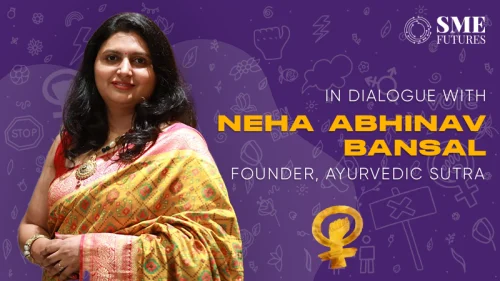“Quitters never win” defines the stature of Dada, arguably India’s greatest cricket captain. In the book A Century is not Enough, Sourav Ganguly takes you through his life, looks at how to conquer challenges and come out a winner.
Dada’s life symbolises a leader’s journey. From his early days where he had to wait for over four long years before being included in the team to the clash with the Australian coach Greg Chappell, Ganguly’s cricketing life came with a great set of challenges. He gave confidence to the team, revitalised them and took India to spectacular victories overseas. He fought his way out of every corner and climbed back up from every defeat, becoming India’s ultimate comeback king.
Ganguly, was once a simple child, who first became the prince of Kolkata and then became the Maharaja of Indian cricket and went on a mission to conquer the world. A career fraught with highs and low, it was Ganguly who gave a new direction and a new dimension to Indian cricket team, and that is where anyone who aspires to be a leader can seek inspiration.
A Century is not Enough is a moving account, full of fascinating tales that unravel the different phases of a legend’s life where failure is not an option and being consistent is the only way to be relevant. It is a journey of transformation, where as a youngster you start on a clean slate, learn on the way and grow to become a respected leader. You create opportunities for youngsters and pass the baton to the next generation and keep the contribution going. That’s the story of Ganguly, which every CXO must pay heed to.
Whether you are a budding cricketer or an experienced CXO, reading this book is a must. There are five key takeaways and critical instances which give us so much of learning.
One: the attitude that matters
“Attitude is important. It is what separates the men from the boys.”
In the initial years of his cricketing career, Ganguly had to undergo a great deal of challenges. Though he made a debut in 1992, Dada was dropped off and had a break of four long years before his re-appearance at the international arena. However, he took the challenging path and kept on performing at the domestic front to finally get the attention of the selectors in 1996.
As an entrepreneur, one faces a series of failures and those who do not let their guards down and keep pushing themselves instead become successful. You have to tell yourself that the sun will rise tomorrow; you will have another opportunity. Yes, the struggle will be full of despair and despondency. But, one day those feelings will come back to help you, pushing you to get to the next level.
Two: appreciating others
An instance, in particular, draws your attention when the prince of Kolkata became the Maharaja, the captain of the Indian cricket team. This was an era when the Indian cricket was under tremendous scrutiny because of match-fixing scandals. Players were under huge pressure to perform in each and every match, and they were being monitored. Ganguly introduced a new thinking in the team — the courage to stand up, challenge the opposition and push for a win. He gave the team a new vision and their only motto was to go for the kill – to play to win. During his tenure, the focus shifted from being in a comfort zone to get into a war zone. Every battle needs fresh blood with killer instincts. That is when the rise of youngsters, like Virender Sehwag, Yuvraj Singh, Mohammed Kaif, Zaheer Khan and Harbhajan Singh, happened. He identified local talent and gave them a sense of security and ground to perform.
The message was clear: if you want to be the No. 1 team, you have to first feel it before you unleash your true potential in the ground. Every CXO these days faces a challenge of growth. It is important to understand that organisational growth results from the collective effort with a vision of ‘Many in body in one in mind’, where everyone in the organisation aligns their minds with a single goal – to win.
Three: strategic steps
“If you are mentally prepared to score against them, chances are that you will”: with this thought, Ganguly and company prepared themselves for one of the toughest tours of their careers to Australia. Leaders lead from the front, do their homework, so that they could guide the team in the right direction.
In this book, Ganguly reveals how the villain of the Indian cricket Greg Chappel met him and guided and toured Australia for seven days with him and offered all the required insights which were helpful for the Indian captain and the team to get prepared for the battle Down Under. This short trip done four months prior was a turning point for the Maharaja and the team itself. As a leader in the organisation, you are responsible to take strategic calls keeping tactical strategy in place. It is always critical to know your strengths and areas to work upon to get into any kind of battle. Relevant analysis helps in making better strategies, which can finally get executed by the team with enormous self-belief.
Four: team character
“All of us make mistakes in life. All of us make wrong assessments of others.”
Ganguly has had his share of lows too. He made mistakes, for which he got reprimanded many times in his career. He got dropped from the team multiple times, rested during the series and got demoted within the team. But, he never got defeated mentally.
One of the gravest mistakes in the history of the Indian cricket, which also shook up the entire Indian cricket for some time, was hiring Greg Chappell as coach. It also had a direct impact on Ganguly’s cricketing career, which nearly came to an end in this period. But, he roared as a lion king and made tremendous efforts through his performance and made a comeback.
This episode clearly shows the criticality of hiring the right human resource in any structured system. A single mistake can prove disastrous and hamper the growth trajectory of any organisation. CXOs do get tempted by big names when it comes to strategic hirings, and many do hire the celebrated names, but we tend to forget that a world lies beyond these names too. The big name does not matter; what matters is the thought process, the attitude of the candidate, how much (s)he values learning, teamwork and innovation as a tool for growth.
The book also throws light on his stint at the Indian Premier League (IPL), his relationship with Shah Rukh Khan, handling Shoaib Akhtar in pressure situations, becoming captain and getting dropped as a captain and leaving the IPL on a high note as a captain.
Five: failure as teacher
“Nobody escapes the ups and downs of life. At some stage, you will face such a challenge.”
Ganguly’s career is a perfect example of this adage. After having a great five long years as a captain, which changed the face of the Indian cricket team, he was dropped overnight. But, he was always a fighter who lived in the present. “Failure has always been the best teacher,” he writes in the book. To get over from a low phase, you must stand in front of the mirror and tell yourself, yes, I did lose yesterday, but my time will come.
We all remember the ad which showed Ganguly saying “My Sourav Ganguly, app: mujhe bhule to nahi?”, which had an interesting story behind it. It was one of the painful times for Ganguly, as he was consistently performing at the domestic front but was not getting chance at the international level. When you fly in the sky and see dark clouds, the only way to negotiate is to fly higher. That’s what he did, made a comeback and retired with a high head.
As a leader, you must know that youngsters do follow you, and your actions can either inspire the youngsters or discourage him. The choice is yours.











